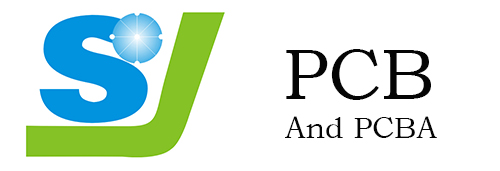Types of PCB layers
PCB Layer Count PCB structure refers to the number of different layers or layers that will carry signals. The layer type indicates the type of signal that will propagate along the layer. Each signal layer or PCB layer consists of a dielectric material with a copper surface. Most layers have etch marks. However, the copper surface can also be a solid plane for grounding or energization. In general, signal types can be classified as high frequency, low frequency, power, or ground. Depending on the signal type, the dielectric and copper may have different design requirements.
PCB layer type design requirements
The main material considerations for PCB layers are dielectric and copper. Dielectric materials provide isolation between different signal types on adjacent layers. This is also the main factor that determines the resistivity of the circuit board. The surface copper of this layer defines the trace current capacity, resistance and losses. The weight or thickness of the copper is used to ensure sufficient current flow. Closely related to copper weight are trace widths and lengths, which specify the physical space for each signal path. For high-frequency AC signals, trace matching (length and width) is important for signal integrity, while for power and ground signals, minimizing losses (corresponding to shorter traces) is important. The table below summarizes the design requirements that should be considered when designing the PCB layers.
pcb table
In the table above, "none" indicates that the default material (such as standard FR4) may be sufficient. There are many material factors that affect PCB performance. These properties are usually categorized as electrical, mechanical, thermal or chemical and should also be considered when designing a PCB stack.
How to optimize the PCB layers of a circuit board
In order to create the best board layout for your design, it is necessary to optimize it, which is manufactured and operated by your CM. This can only be achieved through an optimal choice of the stack and its constituent PCB layers. Following these tips will help you achieve these goals.
PCB layer stacking tips
Tip 1: Determine Your Motherboard Signal Type
The type of signals present on the board and on it are the most important factors in choosing a stackup and layer. For special and multi-signal processing, you will most likely need more layers due to isolation and different reasons.
Tip 2: Determine the number and type of vias
Another factor in determining stacking needs is through selection. For example, if you choose to bury the vias, additional internal layers may be required.
Tip 3: Determine the Number of Signal Layers Required
After identifying the signal types and vias, you can design the stack by defining the number of layers required and their types.
Tip 4: Determine the Number of Aircraft Needed
Choose your power and ground planes so that they can be used to shield the signal plane and reduce EMI.
circuit board
Tips for Selecting PCB Layers
Tip 1: Define layers based on signal type
To determine the best parameters or material properties, each layer needs to be classified according to its function or the type of signal it will carry.
Tip 2: Select Layer Dielectric and Copper Based on Signal Requirements
After a layer is classified, its dielectric constant and copper value can be select. These choices will heavily influence the mechanical, electrical, thermal and chemical properties of each layer. However, it should also be considered
Additional material properties to refine your selection based on their importance to PCB layer types.
Optimizing the board PCB layers can only be done by following good practices for optimal material selection and working with a CM that will realize your choice.



